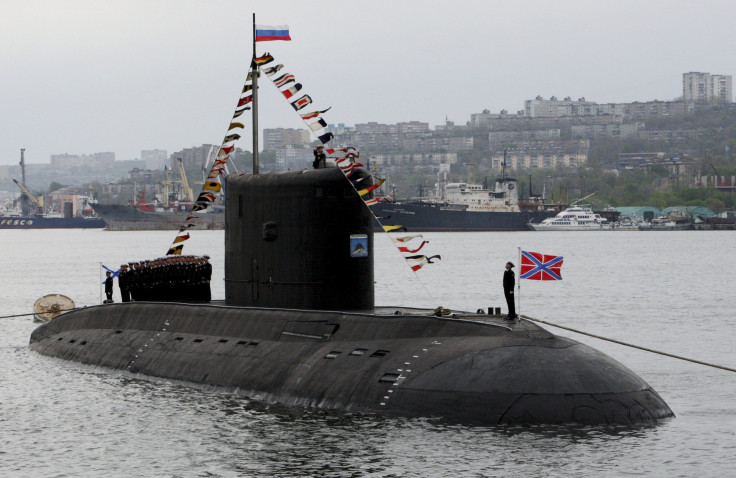Russian Nuclear Submarine Breaks Down In Baltic Sea, Drifts Off Towards Danish Island
KEY POINTS
- Russian Navy tug prepared to tow the sub before it sprung back to life
- Russia politely declined the help of the Danish patrol vessel HDMS Diana
- 'Orel' resumed its transit first on the surface before submerging again
Russia's Oscar-II class nuclear guided-missile submarine 'Orel' broke down in Danish waters on July 30 and drifted towards the island of Sejerø.
The submarine lay dead in the water due to an unknown problem with its propulsion system in the Baltic Sea near Denmark’s second-largest city Aarhus. The Russian Navy prepared itself to tow the submarine before it restarted operations, reported The Barents Observer.
Orel was accompanying Russian Navy 'Altay' and anti-submarine missile destroyer 'Vice-Admiral Kulakov' from St. Petersburg towards the Kola Peninsula when it broke down.
A Facebook post by the crew of 'HDMS Diana', a Danish patrol vessel, termed the incident "dramatic and exciting." The post added that the crew of the 'Orel' was seen on the forward deck wearing life preservers.
Danish ships often escort foreign warships while they transit through its territorial waters as there is no way in and out of the Baltic sea that does not cross through the Danish or Swedish territorial waters. HDMS Diana was escorting 'Orel' when the incident occurred.
According to the crew of Diana, Altay came closer to the submarine, and ropes were prepared for towing the submarine. "OREL got started again though, and all the rigged towing concept was re-rigged," the post read.
"HDMS Diana offered help, but such assistance was politely but not surprisingly refused," it added. The Danish vessel also attempted to make radio contact with the stricken submarine, but it was answered instead by the crew of the Vice-Admiral Kulakov.
“From Diana, we closely followed the situation on the submarine and our thought quickly turned to the film 'The Hunt for the Red October' when we saw all the people on the deck of the submarine," the post read, adding that it was "exciting" to watch it up close.
Log into Facebook to start sharing and connecting with your friends, family, and people you know.
The Russian vessels then moved north to Skagerak, the waters between Denmark and Norway. According to The Drive, the submarine resumed its transit first on the surface before submerging again.
The Russian Navy has not responded to why the submarine lost propulsion. "It is always worrying when a vessel of this type has problems with propulsion," Norway Joint Headquarters spokesperson Major Elisabeth Eikeland told The Barents Observer.
The Oscar-II class nuclear guided-missile submarine is powered by two nuclear reactors and is armed with cruise missiles and torpedoes. Two decades ago, Oscar-II class sub 'Kursk,' had met with a terrifying accident after an explosion in the torpedo compartment blew off the front part of the submarine. All 118 crew members were on board died.
The Baltic Sea also witnessed another accident last year after a Russian Navy frigate collided with a merchant ship at the entrance to the Baltic.

© Copyright IBTimes 2024. All rights reserved.




















